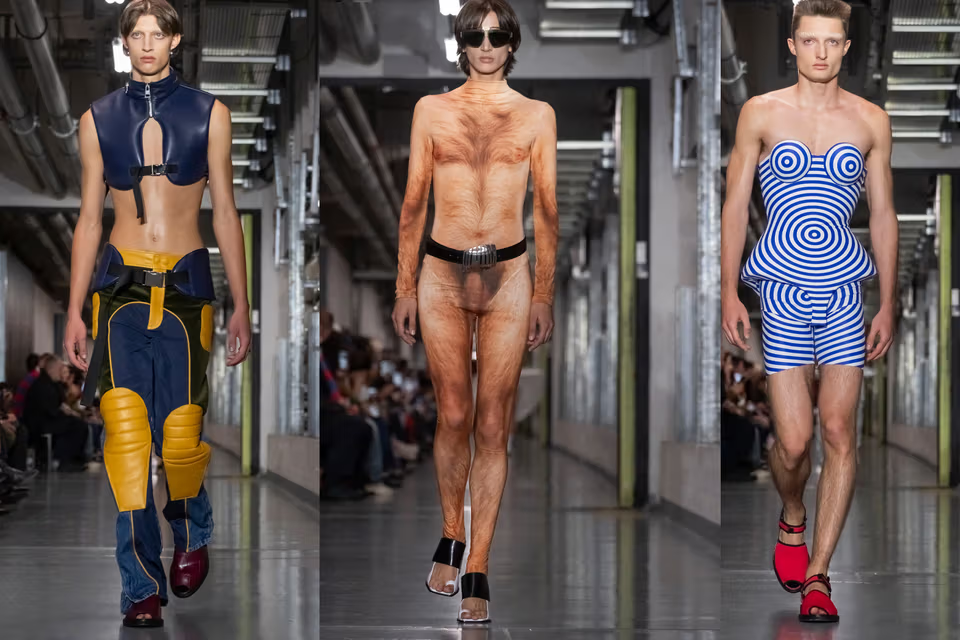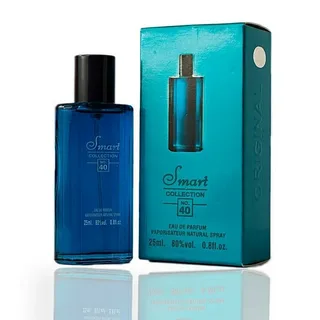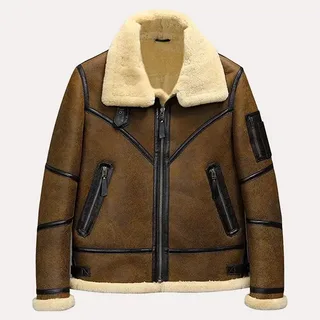In the ever-evolving world of high fashion, few names stir curiosity and excitement like Jean Paul Gaultier. Known for breaking conventions and rewriting the rulebook of couture, the brand has always embraced rebellion as its identity. This season, the spirit of disruption was revived once more under the creative vision of Dutch designer Duran Lantink, who made his highly anticipated debut for Jean Paul Gaultier Spring/Summer 2026 (SS26).
Fashion insiders, critics, and fans alike gathered in Paris on October 5 to witness what was arguably one of the most daring reinventions of a legacy brand in recent years. And true to form, Lantink delivered a show that was bold, controversial, and entirely unforgettable.
A New Era for Jean Paul Gaultier
For over a decade, Jean Paul Gaultier’s ready-to-wear line had remained dormant, while the brand focused on couture through a rotating designer system. Visionaries such as Glenn Martens, Simone Rocha, Haider Ackermann, and Ludovic de Saint Sernin each left their mark through limited collections that celebrated the brand’s heritage with modern reinterpretations.
However, with Duran Lantink’s appointment in April 2025, Jean Paul Gaultier signaled a new phase one that blends its provocative DNA with the Dutch designer’s unfiltered, experimental style. Lantink, often referred to as the enfant terrible of contemporary fashion, seems a perfect successor to the rebellious French designer who built a career on challenging fashion’s boundaries.
His appointment initially raised eyebrows. Could someone so young and relatively new to the Paris fashion scene successfully channel Gaultier’s essence without falling into imitation? As the SS26 collection proved, the answer was a resounding yes.
The Setting: A Stage for Revolution
The SS26 show unfolded inside a minimalist yet symbolic venue in Paris a raw industrial space transformed into a futuristic catwalk. The setting immediately set the tone: stripped-back, powerful, and charged with intention. Gone were the theatrics of traditional haute couture; instead, Lantink’s debut leaned into authenticity and rebellion.
As the lights dimmed and the first models emerged, the crowd instantly sensed that something special was about to unfold. A remix of Grace Jones vocals pulsed through the air, echoing the anarchic energy of 1980s nightlife the very scene that birthed Jean Paul Gaultier’s most iconic creations.
Deconstruction and Rebirth: The Design Language
Lantink’s SS26 collection was not just a tribute to Gaultier it was a deconstruction of the brand’s history. Pieces were literally and metaphorically taken apart, reassembled, and reimagined.
Corsets, a Gaultier signature, were shredded and layered over oversized denim jackets. Traditional pinstripe tailoring was reworked with asymmetrical cuts and transparent inserts, while sailor motifs the house’s most recognizable emblem were flipped upside down into something entirely new.
One standout look featured a hybrid trench coat half leather, half chiffon paired with upcycled cargo trousers and a sheer bodysuit embroidered with metallic thread. It encapsulated Lantink’s sustainable approach to luxury: chaos turned into beauty.
The palette balanced the raw with the refined: matte blacks and deep navy tones contrasted with neon bursts of chartreuse, metallic silver, and hot pink. The materials told their own story vinyl, lace, upcycled denim, recycled silk all layered into what Lantink called “a collage of contradictions.”
Disruption Meets Heritage
In many ways, Duran Lantink’s debut was a conversation between past and present a dialogue between Gaultier’s irreverence and Lantink’s radicalism.
One could spot direct references to Gaultier’s archives: the cone bra made famous by Madonna in the early 90s reappeared, this time sculpted from deconstructed sportswear and silicone. Sailor caps were reinvented as sculptural headpieces. Genderless silhouettes blurred all definitions of masculinity and femininity, continuing Gaultier’s mission to dissolve fashion’s binaries.
Yet, what truly made Lantink’s work disruptive was not just the aesthetic it was the ideology. Every garment embodied resistance against conformity. The show wasn’t about nostalgia but evolution. Lantink didn’t imitate Gaultier; he reinterpreted him for a generation raised on sustainability, digital culture, and identity fluidity.
A Statement on Sustainability
Sustainability has always been central to Duran Lantink’s own label, and his debut at Jean Paul Gaultier reinforced that commitment. Every piece in the SS26 collection incorporated upcycled materials vintage garments, deadstock fabrics, and discarded couture samples repurposed into new works of art.
This wasn’t just a marketing gesture. For Lantink, fashion must engage with the chaos of overproduction and waste. His process cutting, fusing, rebuilding reflects the very ethos of renewal. By transforming discarded luxury into avant-garde design, he not only honors the Gaultier spirit of innovation but also pushes the industry toward accountability.
The message was clear: sustainability doesn’t mean compromise. It can be radical, rebellious, and glamorous all at once.
Models, Casting, and Inclusivity
True to the Gaultier tradition, the casting of the show was inclusive, diverse, and expressive. Lantink showcased models of all genders, body types, and ethnicities many of them street-cast rather than traditionally scouted.
Among them were drag performers, trans models, and non-binary artists, each representing the fluidity that defines today’s fashion landscape. This casting echoed Gaultier’s long-standing celebration of individuality and defiance of conventional beauty.
The runway became a mirror of reality a chaotic, beautiful, human mix of expression. As one critic put it, “Lantink didn’t just dress bodies; he dressed identities.”
Accessories and Styling: Chaos as Elegance
Accessories were integral to the SS26 narrative. Spiked chokers met delicate pearls; chunky industrial boots clashed with lace stockings; metallic corsets layered over knitwear created tension and harmony at once.
Hair and makeup mirrored the duality of the collection: slick futuristic styles contrasted with natural textures, and bold metallic pigments framed eyes in geometric strokes. The styling team called it “controlled chaos” a perfect metaphor for Lantink’s world.
Reception: Applause and Anticipation
The reaction from the fashion world was immediate and electric. Critics hailed the collection as a “rebirth of rebellion,” noting how seamlessly Lantink balanced respect for the house’s heritage with his own contemporary voice.
Fashion journalists praised the raw energy of the show, with many calling it one of Paris Fashion Week’s defining moments. Industry insiders described the debut as “a shock to the system” a necessary disruption in an industry that often fears risk.
Social media lit up with praise, too. Fans drew parallels between Lantink and the early Gaultier days, calling him “the right kind of troublemaker.” The collection quickly became one of the most-discussed shows of the season, trending across platforms for its fearless approach.
The Future of Jean Paul Gaultier Under Duran Lantink
As the fashion world looks forward, one thing is certain: Duran Lantink’s Jean Paul Gaultier is not here to play it safe. His SS26 debut marks a shift toward a more sustainable, inclusive, and unapologetically experimental era for the brand.
While Gaultier himself has stepped back from designing full-time, his spirit of defiance and play continues to guide the house. Lantink, with his rebellious attitude and avant-garde craftsmanship, seems destined to carry that torch forward.
He has promised to keep JPG’s signature codes alive corsetry, deconstruction, gender fluidity while exploring new narratives around sustainability, identity, and cultural resistance. If SS26 was a preview, the coming seasons are bound to challenge fashion’s norms even further.
Conclusion: The Rebirth of a Fashion Revolution
With Jean Paul Gaultier SS26, Duran Lantink didn’t just deliver a debut he delivered a manifesto. One that celebrates individuality, chaos, and conscious creation. It wasn’t nostalgia that powered his vision, but a demand for relevance.
By embracing imperfection, questioning luxury, and redefining glamour, Lantink reconnected the house of Gaultier to its rebellious roots while projecting it firmly into the future.
In a season dominated by safe debuts and predictable nostalgia, Jean Paul Gaultier SS26 stood apart a reminder that fashion, at its best, should provoke, inspire, and disrupt.
As Lantink himself stated backstage, “Fashion should make you feel something even if it makes you uncomfortable. That’s when it’s alive.”
And with this debut, Jean Paul Gaultier feels more alive than ever.


